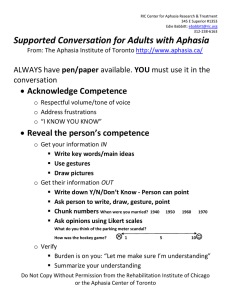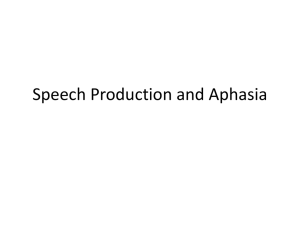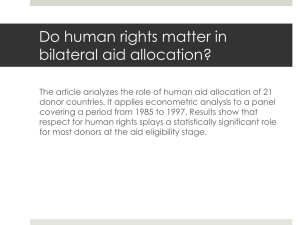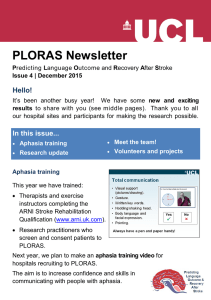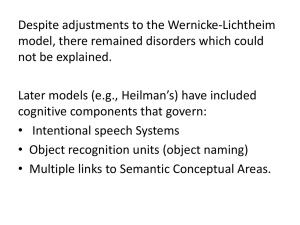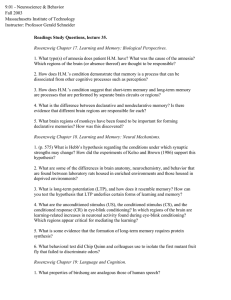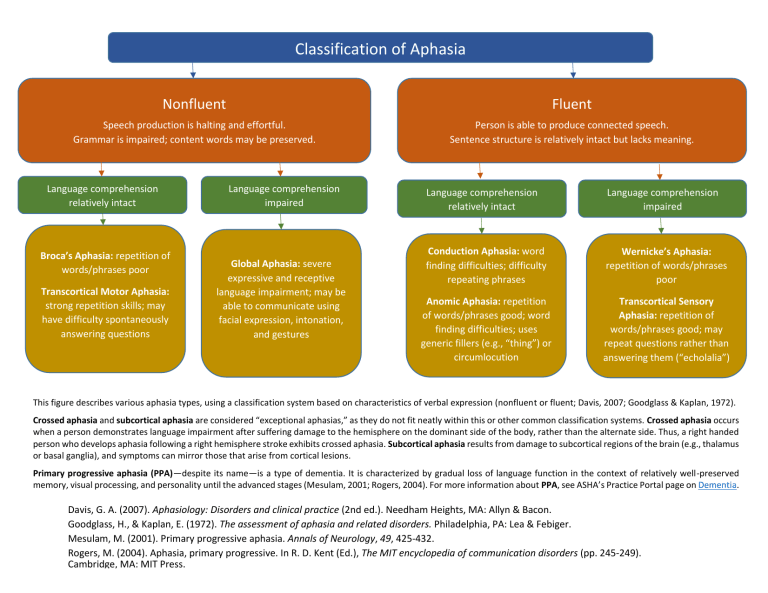
Classification of Aphasia Nonfluent Fluent Speech production is halting and effortful. Grammar is impaired; content words may be preserved. Person is able to produce connected speech. Sentence structure is relatively intact but lacks meaning. Language comprehension relatively intact Broca’s Aphasia: repetition of words/phrases poor Transcortical Motor Aphasia: strong repetition skills; may have difficulty spontaneously answering questions Language comprehension impaired Global Aphasia: severe expressive and receptive language impairment; may be able to communicate using facial expression, intonation, and gestures Language comprehension relatively intact Language comprehension impaired Conduction Aphasia: word finding difficulties; difficulty repeating phrases Wernicke’s Aphasia: repetition of words/phrases poor Anomic Aphasia: repetition of words/phrases good; word finding difficulties; uses generic fillers (e.g., “thing”) or circumlocution Transcortical Sensory Aphasia: repetition of words/phrases good; may repeat questions rather than answering them (“echolalia”) This figure describes various aphasia types, using a classification system based on characteristics of verbal expression (nonfluent or fluent; Davis, 2007; Goodglass & Kaplan, 1972). Crossed aphasia and subcortical aphasia are considered “exceptional aphasias,” as they do not fit neatly within this or other common classification systems. Crossed aphasia occurs when a person demonstrates language impairment after suffering damage to the hemisphere on the dominant side of the body, rather than the alternate side. Thus, a right handed person who develops aphasia following a right hemisphere stroke exhibits crossed aphasia. Subcortical aphasia results from damage to subcortical regions of the brain (e.g., thalamus or basal ganglia), and symptoms can mirror those that arise from cortical lesions. Primary progressive aphasia (PPA)—despite its name—is a type of dementia. It is characterized by gradual loss of language function in the context of relatively well-preserved memory, visual processing, and personality until the advanced stages (Mesulam, 2001; Rogers, 2004). For more information about PPA, see ASHA’s Practice Portal page on Dementia. Davis, G. A. (2007). Aphasiology: Disorders and clinical practice (2nd ed.). Needham Heights, MA: Allyn & Bacon. Goodglass, H., & Kaplan, E. (1972). The assessment of aphasia and related disorders. Philadelphia, PA: Lea & Febiger. Mesulam, M. (2001). Primary progressive aphasia. Annals of Neurology, 49, 425-432. Rogers, M. (2004). Aphasia, primary progressive. In R. D. Kent (Ed.), The MIT encyclopedia of communication disorders (pp. 245-249). Cambridge, MA: MIT Press.
